When there’s a seemingly endless stream of rubbish that needs to be sorted into general waste and various recycling boxes, you need a system that eases the load. Once this is in place, you’ll find rubbish is less likely to pile up where it shouldn’t and your home should look tidier as a result. Here are some tips for keeping on top of things.
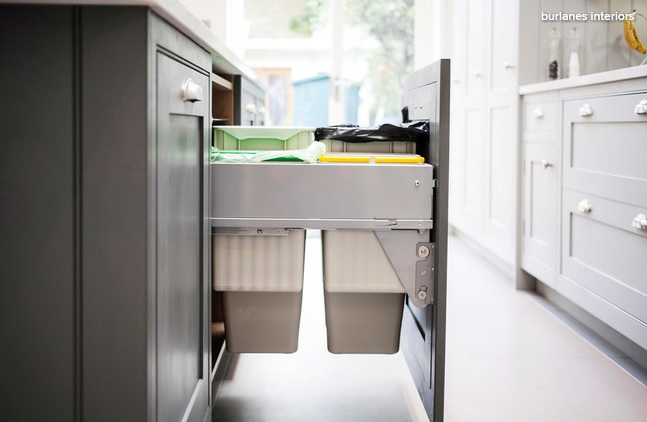
Have a central bin point
While smaller bins can be kept in different areas of your home, try to keep these to a minimum and have one central area where the bulk of your rubbish is stored before being taken outside. Have a separate bin at this central station for each of your outdoor bins: one for general waste, one for recycling and one for food, for example.
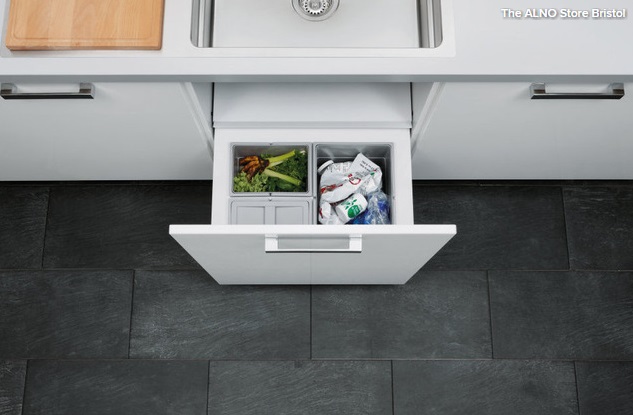
Hide in a drawer
Try to keep general kitchen rubbish bins hidden away. Most kitchen ranges now come with the option of a ready-made unit divided up into sections for waste, as seen here.
If you have the choice, fit the bin in a drawer that you can then pull towards you, rather than a cupboard. Many cupboard bins can attach to the door, which then swings the bin out when you open it, but these have a tendency to jam and the additional weight could result in the door sagging over time.
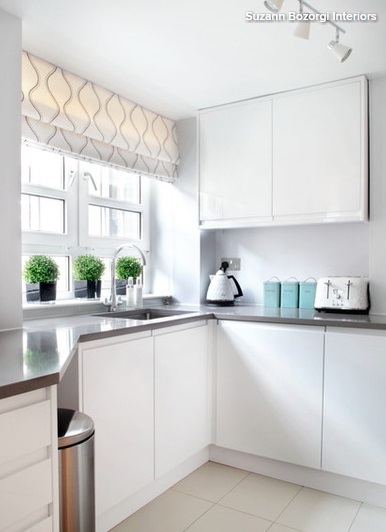
Tuck under a worktop
If you’re on a tight budget, or have a very small kitchen and can’t justify sacrificing a whole unit for waste disposal, simply aim to keep bins largely hidden from view. Try behind the kitchen door or tucked into a little niche, as here.
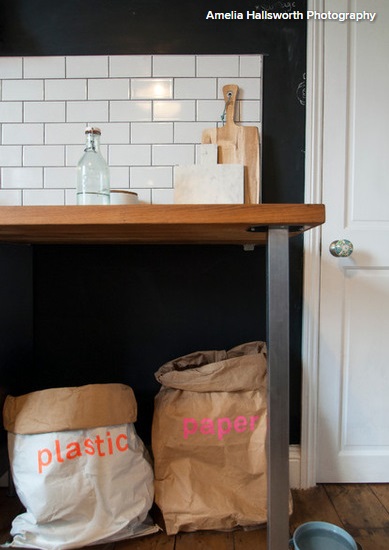
Opt for attractive containers
If there’s simply nowhere to hide your bins, make sure you choose containers for your rubbish that are attractive to look at. Here, a couple of stylish, heavy-duty sacks are used for two types of recycling.
Stuck for ideas? Consider vintage wooden crates, colourful Tubtrugs, roomy fabric bags or smart felt baskets for paper, glass and plastic recycling.
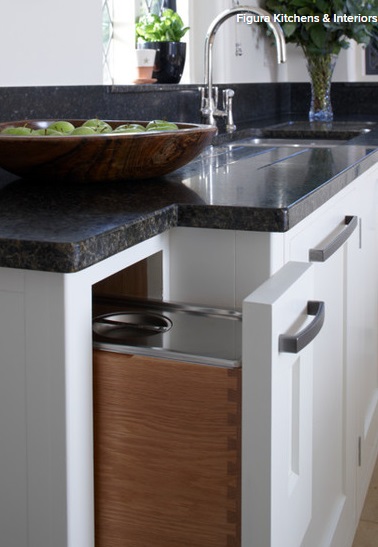
Keep a lid on it
It may seem obvious, but not all off-the-shelf bins come with lids, so make sure that any waste likely to start to rot or grow mould has a lidded bin, so unpleasant odours don’t seep into your room. Empty these containers extra-frequently to reduce the chance of mould starting to grow on the inside of the bin, too.
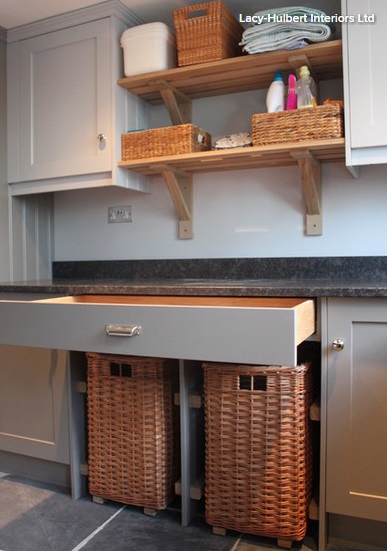
Take recycling out of the kitchen
Now that rubbish requires sorting, bins take up more room in the kitchen than ever before. It may be more practical to keep your recycling in the utility room, if you have one, or in another niche, such as under the stairs. This would mean you’d only need room for food and general waste in the kitchen.
Tall, pull-out containers in an open section of units, as here, make throwing rubbish away quick and easy. These smart wicker baskets are for laundry, but they could equally be used for dry recycling waste, such as paper, glass and plastic – far more attractive than standard plastic bins.
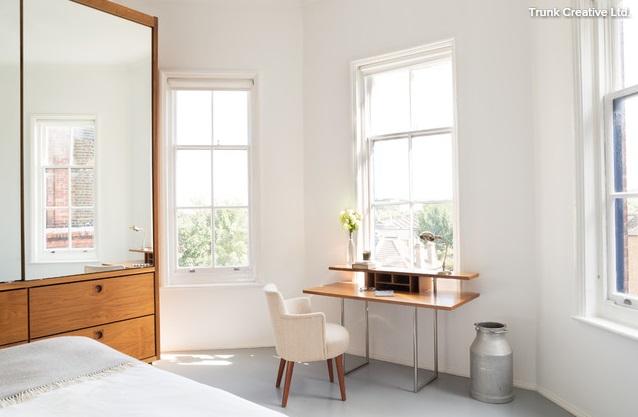
Bin the bin
If you have just one central bin area in your home, you’ll avoid having to do a rubbish bin run around all your rooms each week – and won’t have rubbish hanging around the whole house.
If you do want to have a few other bins around your home, however, try opting for ones that don’t look like bins, like this cute milk pail.
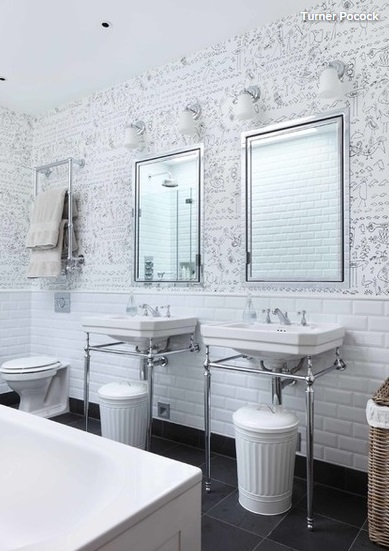
Make a feature of bins in the bathroom
In the bathroom, especially one regularly used by guests, it’s a good idea to have a clearly defined bin. You don’t want visitors peeking into random tubs searching for it!
That’s not to say you have to go for a boring pedal bin, however. These two painted ‘garbage can’-style bins fit beautifully with the vintage industrial design of this bathroom.
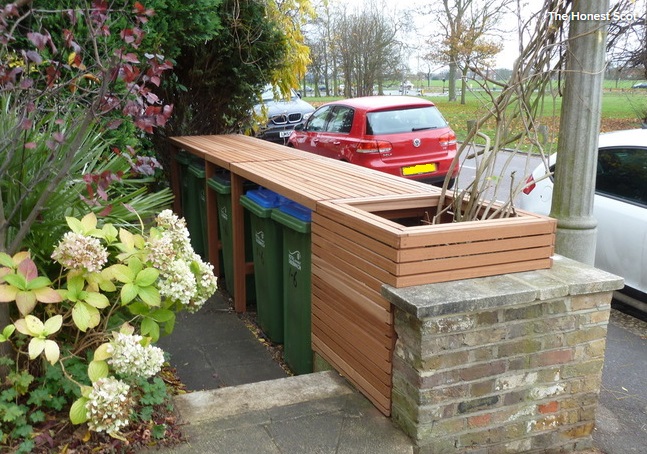
Build a bespoke home outdoors
Try to keep your outside bins hidden from sight, too. You don’t want your rubbish to be the first thing your guests see when they walk up the garden path. It’s worth spending a little money to get a smart storage area built for them, as here. This will also help to keep foxes and vermin at bay.
Source: Houzz
